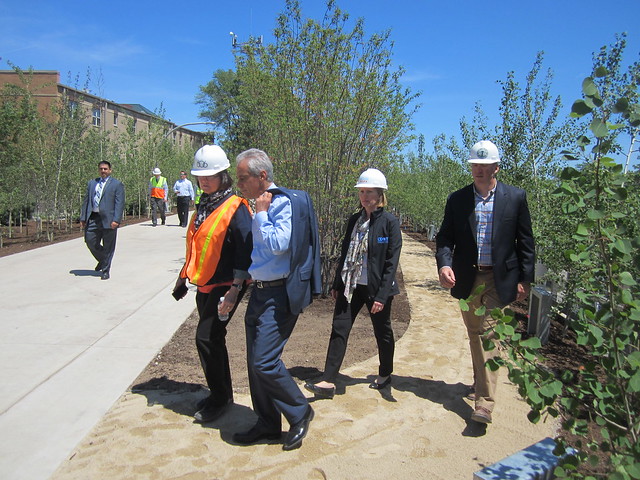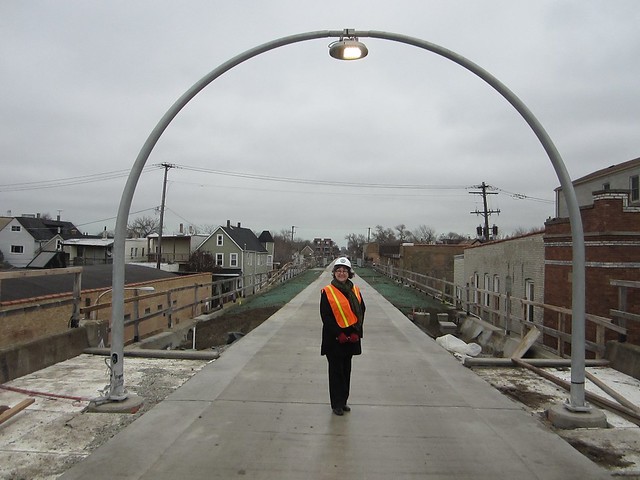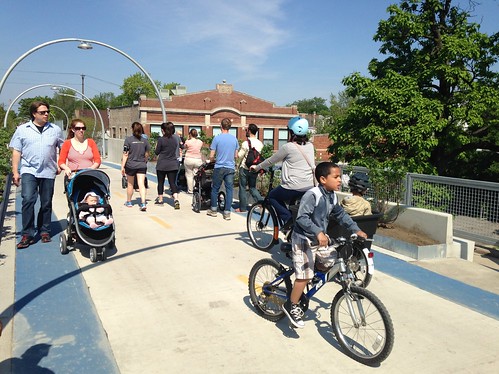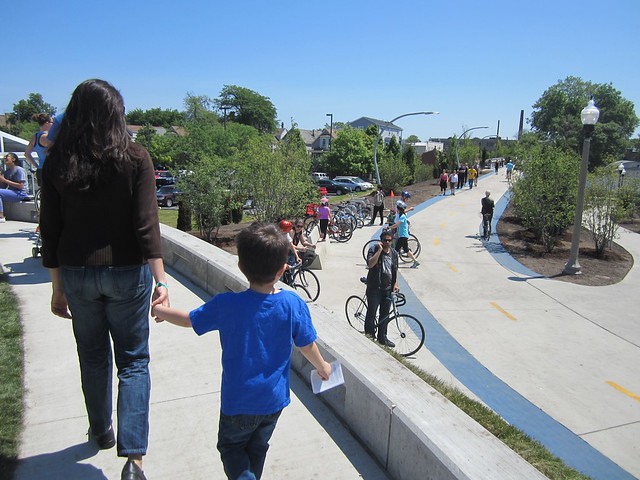The Trust for Public Land’s Chicago director Beth White announced last week that she will be leaving Chicago to take a new job as president and CEO of the nonprofit Houston Parks Board, beginning in June.
White is best known here as the woman who led the development of the $95 million, 2.7-mile Bloomingdale Trail elevated greenway and its access parks, a collectively known as The 606. Jamie Simone, currently the director of TPL’s Chicago urban parks program, will take over as the organization’s interim director after White steps down.
In her new position, White will oversee the implementation of the $220 million Bayou Greenways 2020 initiative to create 160-mile system of interconnected trails and parks along the Texas city’s waterways. The project was made possible by a $100 million city bond measure, which TPL helped get passed.
I checked in yesterday with White to discuss the challenges of managing The 606, which recently won an award from the American Planning Association, and what she believes its legacy will be.

White told me that one of most difficult aspects of getting the trail built was coordinating with all the different entities involved. These included multiple city departments, Canadian National Railway (which previously owned the right-of-way the trail is built on), the design team, community organizations and residents, and private donors.
“There were so many moving parts, and sustaining the project over time was challenging, what with all the ups and downs in the economy and the changes in leadership,” she said. “But it’s a testament to the project that so many people were committed to it that we were able to get it done.”
The greenway has been nearly universally cited as a wonderful amenity for Wicker Park, Bucktown, Humboldt Park, and Logan Square. However, many have argued that the trail has accelerated the pace of gentrification in Humboldt and Logan.
For example, in January dozens of residents held an anti-displacement rally after a developer announced plans for luxury town houses a block south of the trail, priced at $929,000 each. Community leaders in Pilsen and Little Village recently told me they feel the city should be more proactive about preserving affordability when it builds the recently announced Paseo trail through these neighborhoods.
I asked White, in light of the changes that are currently taking place near The 606, if there are there any lessons to be learned, or things she might have done differently. “You make the best decisions you can with the information you have at the time, and hindsight is always 20-20,” she responded.
“But I’m proud of the collaborative nature of the project, that included community members, groups like Friends of the Bloomingdale Trail, the Logan Square Neighborhood Association, the designers, and the inter-agency team,” White added. “The trail has brought these four communities together and set the stage for addressing things that go way beyond the trail itself. These people now know each other and know who to contact to address issues both positive and negative.”
White credited the trail process with raising awareness of existing city programs to help neighbors stay in their homes, such as property tax exemptions, as well as helping to connect residents with affordable housing opportunities in the affected neighborhoods. She noted that staff from the Chicago Community Development Corporation were present at most of the trail’s public input meetings to field questions about affordability.
"You don't want to stop investing in neighborhoods and putting in parks for the people who need them now," White added. "But the question is how to keep that conversation going about how to keep these neighborhoods diverse and affordable."
As for positive lessons from the Bloomingdale experience, White says that one of the best decisions made was to open the trail from end-to-end as soon as possible and complete the fine-tuning later. “That was a bold move by the city,” she said. “But people were clamoring to get up there so, to us, that was the heart of the project, and it made a huge difference. That’s a great example for the Paseo.”
Recently all the landscaping of The 606 was completed, and that foliage is beginning to bloom. TPL is currently collaborating with the 21 schools along the trail corridor to incorporate the path into educational programs that cover areas like botany, astronomy, meteorology, and environmental science.
The Trust is also working on raising an additional $14 million in private donations to finish the trail's access parks, including one at Kimball, and another at the path's western terminus at Ridgeway, on land currently occupied by the shuttered Magid Glove factory.
Unfortunately, a parks spending freeze instituted by Illinois governor Bruce Rauner has put the brakes on the Magid Glove redevelopment, as well as plans for a bike and skateboard park at the east end of the trail in Walsh Park. However, White notes that the state funding is still appropriated and Springfield would be wise to release the money, since it would be matched dollar-for-dollar by local funding, and would create jobs. "We're not giving up on that money," she said.
White will be in town for the Bloomingdale’s one-year anniversary on Saturday, June 4, when a stretch of Humboldt Boulevard will be pedestrianized for a street party, including diverse live entertainment and tabling by community organizations. If you see her at the event, be sure to congratulate her on her new gig and thank her for all her hard work making The 606 one of Chicago's most beautiful and useful transportation and recreation facilities.







